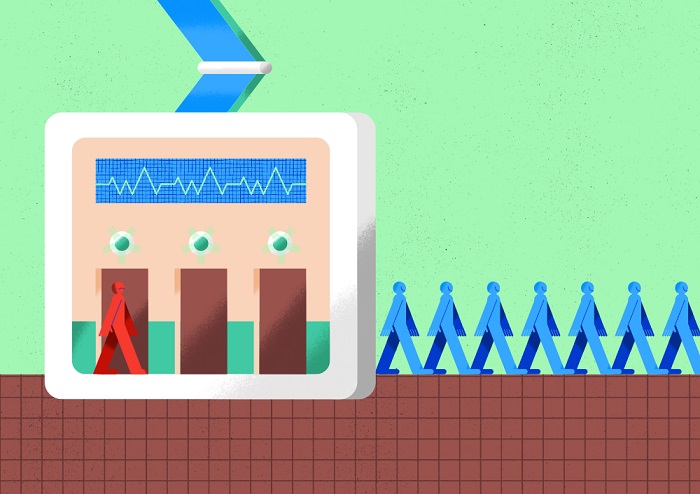Artificial intelligence helps to reduce the burden on scarce resources
Cardiology is confronted with a major challenge: with roughly 17.9 million fatalities each year, cardiovascular diseases are a major cause of death worldwide. Acute conditions such as myocardial infarction and stroke tie up a huge number of medical specialists; increased life expectancy is bringing about a demographic change that is further increasing demand for therapy to treat chronic conditions. The growing shortage of resources – of physicians, as well as nurses and technologists – demands new approaches in diagnostics and therapy; modern digital technologies provide a valuable remedy.
“The doctor will see you now”: in most health systems, patients will need patience if they are to hear this invitation. And the discrepancy between demand and availability in time slots is widening. A recent U.S. study demonstrates this imbalance, reporting that one in three physicians active in cardiology (35.4 percent) had reported symptoms of burnout. In this situation, how can we ease the burden on cardiologists and, at the same time, support patients whose mobility is impaired?
Managing conditions used to be a matter of regular visits to one’s physician, who would examine his or her patient’s heart function through ECG and possibly imaging. Artificial intelligence (AI) offers support – with a broad spectrum of algorithms ranging from pattern matching to deep learning. A powerful solution created by medical software specialists with Cardiomatics analyzes seven-day ECGs and Holter ECGs in long-term remote monitoring – conveniently, from patients’ homes.
Automation speeds up diagnostic processes for atrial fibrillation and makes them more precise
This solution focuses on the detection of atrial fibrillation. Called AF or Afib for short, this symptom increases patients’ risk of stroke five times in comparison with the healthy population. The fully automated analysis provided by Cardiomatics uses data from ECG recorders; cardiologists quickly receive an easily readable report as a basis for their diagnosis. The technology leads to more sustained continuous monitoring and to improved data; it reduces the number of in-person meetings with physicians significantly, and helps to avoid incorrect diagnoses resulting from human errors. Speedier diagnoses allow therapies to be begun sooner, and they help preempt systemic embolic events with their relevant consequences regarding patient health and costs to the community. They also serve to reduce the use of valuable staff resources by shortening processes.
“To analyze long-term ECGs used to take up a lot of time, and it presented us with staff availability issues,” recalls Ulrich Ingold, MD, a cardiologist who works for Herzpraxis Interlaken in Switzerland. Every month, Cardiomatics evaluates thousands of hours of ECG recordings for this hospital cardiology department in Interlaken. The time staff invests in evaluations has been significantly reduced, and the quality of the automated analysis is high. Just like his colleagues, Dr. Ingold is positive: “We would not think of doing without Cardiomatics now.” The resulting data supports the manufacturer in the continuous optimization of the algorithms, which were developed jointly by medical computer scientists and physicians, based on enormous volumes of vetted medical data.
“Automation of support for the diagnostic process is establishing itself in cardiology,” observes Cardiomatics CEO Rafał Samborski. “Our dependable AI solution reduces the work burden on physicians and their teams, and it serves to empower patients to actively engage in the management of their condition. It even enhances diagnostic precision – and helps to reduce the cost of care.” Time saved, according to Samborski, provides more opportunities for cardiologists to interact with their patients – and to offer them advice for the prevention of cardiovascular risks.


